Deep Purple - Smoke On The Water
Deep Purple are an English hard rock band formed in London, England in 1968 . Along with Led Zeppelin and Black Sabbath, they are considered to be one of the pioneer contributors to the Heavy metal and the hard rock genre, although they have never seen themselves as a heavy metal band. To date, the band has sold over 100 million albums.
History (source from wikipedia)
The band Episode Six released several singles in the UK during the mid-sixties. It featured Ian Gillan on vocals, Graham Dimmock on guitar, Roger Glover on bass, Tony Lander on guitar, Sheila Carter on keyboards, and Harvey Shields on the drums. Despite extensive touring, they never had their big break..
In 1967, a band called The Flowerpot Men and their Garden was formed, formerly known as The Ivy League. It was concentrated on a trio of singers. The new name was clearly derived from the children's show The Flowerpot Men, with the obvious psychedelic-era puns on flower power and "pot". The band's most popular song was "Let's Go To San Francisco." Some listeners assumed that the song was a parody of Scott McKenzie's "If You're Going to San Francisco," but the band has denied this. It featured Tony Burrows, Neil Landon, Robin Shaw, and Pete Nelson on vocals, Ged Peck on guitar, Nick Simper on bass, Jon Lord on organ, and Carlo Little on drums. Jon Lord had formerly played in The Artwoods, Nick Simper had been with Screaming Lord Sutch's The Savages, where he also played with guitarist Ritchie Blackmore.
The Dawn of Purple
In October 1968, the group had tremendous success in the US (but not the UK) with a cover of Joe South's "Hush," taken from their debut album Shades of Deep Purple, and they were booked to support Cream on their Goodbye tour. However they were soon kicked off the tour, allegedly because they were upstaging the headlining act. The band's second album, The Book of Taliesyn, was released in the United States to coincide with this tour, although it would not be released in their home country until the following year. 1969 saw the release of their third album, Deep Purple, which contained a symphony orchestra on some tracks. After these three albums and extensive touring in the States, Rod Evans and Nick Simper were unceremoniously sacked, and replaced by vocalist Ian Gillan and bassist Roger Glover both ex-Episode Six. This would create the quintessential Deep Purple "Mark 2" lineup. Initially, this version of the band released a great single probably influenced by the then-popular stage musical "Hair", a cover of a Greenaway-Cook tune titled "Hallelujah", which flopped, and then the Concerto for Group and Orchestra, a three-movement epic composed by Lord and performed at the Royal Albert Hall with the Royal Philharmonic Orchestra conducted by Malcolm Arnold. Together with Five Bridges by The Nice, it was one of the first collaborations between a rock band and an orchestra, although at the time, certain members of Purple (Blackmore especially) were less than happy at the group being tagged as "a group who played with orchestras" when actually what they had in mind was to develop the band into a much tighter, hard-rocking style.
Top of the World
Shortly after the orchestral release, the band began a hectic touring and recording schedule that was to see little respite for the next three years. Their first studio album of this period, released in mid-1970, was In Rock and contained concert staples Speed King, Into The Fire and Child in Time. The band also issued the UK Top Ten single Black Night. Blackmore's and Lord's guitar-keyboard interplay coupled with Ian Gillan's howling vocals and the solid rhythm section of Glover and Paice, now started to become instantly recognizable. A second album, the slightly more mellow and progressive Fireball (a favourite of Gillan's but not of Blackmore's), was issued in the summer of 1971, creating a number of favourites (Fireball, Demon's Eye, Fools and No One Came). The band also scored another chart hit with Strange Kind Of Woman. Together with Led Zeppelin and Black Sabbath, Purple were laying the groundwork for what is now called heavy metal music, although at the time, the phrase was still to be coined.
During 1972, Deep Purple continued to tour and record at a rate that would be rare thirty years on, releasing Machine Head, an album that was due to be recorded at a casino in Montreux, using the Rolling Stones Mobile Studio, but after a supposedly accidental fire during a Frank Zappa and the Mothers of Invention gig burned down the casino the album was actually recorded at the nearby Grand Hotel -- this incident famously inspiring the song Smoke on the Water. Gillan believes that he witnessed a man fire a flare gun into the ceiling during the concert. Continuing from where both previous albums left off, adding more boogie and funk influences, Machine Head has since remained the band's most classic album, creating a number of career-spanning stage favourites (Highway Star, Space Truckin', Lazy, Pictures Of Home, and Smoke on the Water). This album was followed a few months later by a live release, Made in Japan mostly recorded at three Japanese gigs- two in Osaka and one in Tokyo, it is today still one of rock music's most popular live concert recordings (although at the time it was perhaps seen as less important, as only Glover and Paice turned up to mix it).
The classic Purple Mk 2 line-up continued to work hard and record into 1973, releasing the album Who Do We Think We Are (1973), featuring the hit single Woman from Tokyo, (plus album favourites "Mary Long," "Smooth Dancer," and "Rat Bat Blue"), but tensions within the band were more noticeable than ever. The bad feelings culminated in Ian Gillan quitting the band after their second tour of Japan in the summer of 1973, and Roger Glover being pushed out with him. Their replacements were an unknown singer from northern England, David Coverdale, and bassist Glenn Hughes, formerly of Trapeze. This new line-up continued into 1974 with the heavy blues/rock album Burn, another highly successful release, which contained the concert staples Might Just Take Your Life, You Fool No One and Mistreated. Hughes and Coverdale added a funky R&B/soul element to the band's music, a sound that was even more apparent on the late 1974 release Stormbringer, besides the title track, the album created a number of favourites (Lady Double Dealer, The Gypsy and Soldier Of Fortune). Yet Blackmore was not happy with the results, and as a result left the band in 1975 to form his own band with Ronnie James Dio and Elf, called Rainbow.
With Blackmore's departure, Deep Purple was left to fill one of the biggest vacancies in rock music. In spite of this, the rest of the band refused to go down without a fight, and to the surprise of many long-time observers, actually announced a replacement for the "irreplaceable" Man in Black. His name was Tommy Bolin, and the arrival of the young American to Deep Purple was a reality.
It was Coverdale who had suggested auditioning Bolin. "He walked in, thin as a rake, his hair colored green, yellow, and blue with feathers in it. Slinking along beside him was this stunning Hawaiian girl in a crochet dress with nothing on underneath. He plugged into four Marshall 100-watt stacks and . . ." The job was his. Bolin had been a member of many now-forgotten mid-'60s bands - Denny & The Triumphs, American Standard, and Zephyr, which released three albums from '69-72. Before Purple, Bolin's best-known recordings were made as a gun-for-hire on Billy Cobham's 1973 jazz fusion album, Spectrum, and on The James Gang's "Bang" (1973) and "Miami" (1974). He had also jammed with such luminaries as Dr. John, Albert King, and Alphonse Mouzon and was busy working on his first solo album, "Teaser", when he accepted the invitation to make history as a member of the new Deep Purple.
The resulting album, "Come Taste the Band", was released in the US in October 1975. Despite mixed reviews, the collection revitalized the band once again, bringing a new, extreme funk edge to their hard rock sound, which contained the concert staples Gettin' Tighter, You Keep On Moving and Drifter. Bolin's influence was crucial, and with encouragement from Glenn Hughes and David Coverdale, the guitarist came up with much of the material. Later, when Bolin's own personal problems with drugs began to manifest, the consequences appeared in cancelled shows and missed cues, the writing was on the wall.
The end came on tour in Britain in March 1976 at the Liverpool Empire Theatre. David Coverdale reportedly walked off in tears and handed in his resignation,to which he was allegedly told there was no band to left to quit.The decision to pull the plug on Purple had been made some time before the last show by Lord and Paice,who hadn't told anyone else.It was all over.The break-up of Deep Purple was finally made public in July 1976.
Later, Bolin had just finished recording his second solo album, "Private Eyes", when, on December 4, 1976, the real tragedy struck. In Miami, during a tour supporting Jeff Beck, Bolin was found seemingly unconscious by his girlfriend. Unable to wake him, she hurriedly called paramedics, but it was too late. The official cause of death: multiple-drug intoxication. He was 25 years old.
Subsequently, most of the past members of Deep Purple went on to have considerable success in a number of other bands, including Rainbow, Whitesnake, Black Sabbath and Gillan. There were, however, a number of promoter-led attempts to get the band to reform, especially with the revival of the hard rock market in the late 70s/early 80s.
The Reunions
In 1980, Rod Evans, along with a group of unknown musicians, toured under the banner of Deep Purple. As the only original member, and one little known to most fans, this band was instantly derided by press and fans as a fraud. The lineup performed concerts in Mexico and the USA before legal action was taken to deny them the use of the name. In retrospect, however tenuous the connection this band had to the name "Deep Purple", it at least kept the name alive and in the media, albeit briefly.
However, in April 1984, eight years after the demise of Deep Purple, a full-scale (and legal) reunion happened. It was announced on BBC radio's The Friday Rock Show that the "classic" early 70s line-up of Blackmore, Gillan, Glover, Lord, and Paice was reforming and recording new material. The band signed a deal with Polydor in Europe and Mercury in North America. The album Perfect Strangers was released in October 1984, creating a number of favourites (Knockin' At Your Back Door, Under The Gun, Gypsy's Kiss and of course Perfect Strangers). The reunion tour followed, starting in Australia and winding its way across the world into Europe by the following summer. It was a tremendous success. The UK homecoming proved limited, as they elected to play just a single festival show at Knebworth (with main support from the Scorpions). The weather was famously bad but 80,000 turned up anyway.
The line-up recorded and toured The House of Blue Light in 1987, creating a number of modern era classics (Bad Attitude, The Unwritten Law, Dead Or Alive and Hard Lovin' Woman). This was followed by the live album Nobody's Perfect (1988) which was culled from several shows on this tour. In the UK a new version of "Hush" was released to mark 20 years of the band. In 1989, Ian Gillan was fired from the band, as his relations with Blackmore had soured, and their musical differences had widened too far. Gillan's replacement was former Rainbow vocalist Joe Lynn Turner. This line up recorded just one album, Slaves & Masters in 1990 (One of the favourite albums of Blackmore), and toured in support of it. Despite the renewed excellence of the band during this period, many fans were not pleased with Turner, preferring Gillan.
With the tour done, Turner was forced to go, as Lord, Paice, Glover wanted Gillan back in the fold. Blackmore relented and the classic line-up recorded The Battle Rages On in 1993, creating a number of favourites (Anya, Solitaire, Ramshackle Man and The Battle Rages On). During an artistically successful European tour during the fall of 1993, tensions between Gillan and Blackmore came to a head yet again. Blackmore walked out in November 1993, never to return and leaving the band in a fix. Joe Satriani was drafted in, so the live dates (in Japan) in December could be completed. Satriani stayed on for a European Summer tour in 1994, Satriani was asked to stay permanently but his record contract commitments prevented this. The band unanimously chose Dixie Dregs guitarist Steve Morse to become Blackmore's permanent successor.
Revival
Steve Morse’s arrival thoroughly revitalised the band as he is cited one the best and most accomplished modern guitarists. In 1996 the band released the critically acclaimed Purpendicular, which brimmed with confidence, new ideas and great songs. Deep Purple enjoyed success throughout the rest of the 1990s, releasing the harder-sounding Abandon in 1998, and touring with renewed relish, playing a setlist which was probably more adventurous and eclectic than ever before. In 1999, Jon Lord, with the help of a fan who was also a musicologist and composer, painstakingly recreated the Concerto for Group and Orchestra, and it was once again performed at the Royal Albert Hall in September 1999, this time with the London Symphony Orchestra conducted by Paul Mann. The concert also featured songs from each member’s solo careers, as well as a short Deep Purple set, and the occasion was commemorated on the 2000 album In Concert with the London Symphony Orchestra.
Much of the next few years was spent on the road via constant touring. The group continued forward until 2002, when venerable founding member Jon Lord (who, along with Ian Paice, was the only member to be in all incarnations of the band) announced his amicable retirement from the band to pursue personal projects (especially orchestral work). Rock keyboard veteran Don Airey (Rainbow/Ozzy Osbourne), who had helped Deep Purple out when Lord was injured in 2001, joined the band. In 2003, Deep Purple released their first studio album in five years, the highly praised (but controversially titled) Bananas, and began touring in support of the album immediately. In July 2005 the band stole the show at the Live 8 concert in Park Place (Ontario) and, in October of the same year, released the album Rapture of the Deep. Although recorded in just a few weeks, this proved to be their most progressive and adventurous work for many years and was followed by yet another extensive world tour.
Today, Deep Purple steadfastly carries on in the studio and around the globe as one of history's most prolific, longest-lived, and hardest touring rock bands.
Deep Purple personnel
Mk I (1968-1969)
Rod Evans - vocals
Ritchie Blackmore - guitar
Jon Lord - keyboards
Nick Simper - bass guitar
Ian Paice - drums
Mk II (1969-1973)
Ian Gillan - vocals
Ritchie Blackmore - guitar
Jon Lord - keyboards
Roger Glover - bass guitar
Ian Paice - drums
Mk III (1973-1975)
David Coverdale - vocals
Ritchie Blackmore - guitar
Jon Lord - keyboards
Glenn Hughes - bass guitar,vocals
Ian Paice - drums
Mk IV (1975-1976)
David Coverdale - vocals
Tommy Bolin - guitar
Jon Lord - keyboards
Glenn Hughes - bass guitar,vocals
Ian Paice - drums
(1976-1984) Band split.
Mk IIa, reunited (1984-1989)
Ian Gillan - vocals
Ritchie Blackmore - guitar
Jon Lord - keyboards
Roger Glover - bass guitar
Ian Paice - drums
Mk V (1989-1991)
Joe Lynn Turner - vocals
Ritchie Blackmore - guitar
Jon Lord - keyboards
Roger Glover - bass guitar
Ian Paice - drums
Mk IIb, again reunited (1992-1993)
Ian Gillan - vocals
Ritchie Blackmore - guitar
Jon Lord - keyboards
Roger Glover - bass guitar
Ian Paice - drums
Mk VI (1993-1994)
Ian Gillan - vocals
Joe Satriani - guitar
Jon Lord - keyboards
Roger Glover - bass guitar
Ian Paice - drums
Mk VII (1994-2002)
Ian Gillan - vocals
Steve Morse - guitar
Jon Lord - keyboards
Roger Glover - bass guitar
Ian Paice - drums
Mk VIII (2002-present)
Ian Gillan - vocals
Steve Morse - guitar
Don Airey - keyboards
Roger Glover - bass guitar
Ian Paice - drums
Photos:
The band Episode Six released several singles in the UK during the mid-sixties. It featured Ian Gillan on vocals, Graham Dimmock on guitar, Roger Glover on bass, Tony Lander on guitar, Sheila Carter on keyboards, and Harvey Shields on the drums. Despite extensive touring, they never had their big break..
In 1967, a band called The Flowerpot Men and their Garden was formed, formerly known as The Ivy League. It was concentrated on a trio of singers. The new name was clearly derived from the children's show The Flowerpot Men, with the obvious psychedelic-era puns on flower power and "pot". The band's most popular song was "Let's Go To San Francisco." Some listeners assumed that the song was a parody of Scott McKenzie's "If You're Going to San Francisco," but the band has denied this. It featured Tony Burrows, Neil Landon, Robin Shaw, and Pete Nelson on vocals, Ged Peck on guitar, Nick Simper on bass, Jon Lord on organ, and Carlo Little on drums. Jon Lord had formerly played in The Artwoods, Nick Simper had been with Screaming Lord Sutch's The Savages, where he also played with guitarist Ritchie Blackmore.
In October 1968, the group had tremendous success in the US (but not the UK) with a cover of Joe South's "Hush," taken from their debut album Shades of Deep Purple, and they were booked to support Cream on their Goodbye tour. However they were soon kicked off the tour, allegedly because they were upstaging the headlining act. The band's second album, The Book of Taliesyn, was released in the United States to coincide with this tour, although it would not be released in their home country until the following year. 1969 saw the release of their third album, Deep Purple, which contained a symphony orchestra on some tracks. After these three albums and extensive touring in the States, Rod Evans and Nick Simper were unceremoniously sacked, and replaced by vocalist Ian Gillan and bassist Roger Glover both ex-Episode Six. This would create the quintessential Deep Purple "Mark 2" lineup. Initially, this version of the band released a great single probably influenced by the then-popular stage musical "Hair", a cover of a Greenaway-Cook tune titled "Hallelujah", which flopped, and then the Concerto for Group and Orchestra, a three-movement epic composed by Lord and performed at the Royal Albert Hall with the Royal Philharmonic Orchestra conducted by Malcolm Arnold. Together with Five Bridges by The Nice, it was one of the first collaborations between a rock band and an orchestra, although at the time, certain members of Purple (Blackmore especially) were less than happy at the group being tagged as "a group who played with orchestras" when actually what they had in mind was to develop the band into a much tighter, hard-rocking style.
Top of the World
Shortly after the orchestral release, the band began a hectic touring and recording schedule that was to see little respite for the next three years. Their first studio album of this period, released in mid-1970, was In Rock and contained concert staples Speed King, Into The Fire and Child in Time. The band also issued the UK Top Ten single Black Night. Blackmore's and Lord's guitar-keyboard interplay coupled with Ian Gillan's howling vocals and the solid rhythm section of Glover and Paice, now started to become instantly recognizable. A second album, the slightly more mellow and progressive Fireball (a favourite of Gillan's but not of Blackmore's), was issued in the summer of 1971, creating a number of favourites (Fireball, Demon's Eye, Fools and No One Came). The band also scored another chart hit with Strange Kind Of Woman. Together with Led Zeppelin and Black Sabbath, Purple were laying the groundwork for what is now called heavy metal music, although at the time, the phrase was still to be coined.
During 1972, Deep Purple continued to tour and record at a rate that would be rare thirty years on, releasing Machine Head, an album that was due to be recorded at a casino in Montreux, using the Rolling Stones Mobile Studio, but after a supposedly accidental fire during a Frank Zappa and the Mothers of Invention gig burned down the casino the album was actually recorded at the nearby Grand Hotel -- this incident famously inspiring the song Smoke on the Water. Gillan believes that he witnessed a man fire a flare gun into the ceiling during the concert. Continuing from where both previous albums left off, adding more boogie and funk influences, Machine Head has since remained the band's most classic album, creating a number of career-spanning stage favourites (Highway Star, Space Truckin', Lazy, Pictures Of Home, and Smoke on the Water). This album was followed a few months later by a live release, Made in Japan mostly recorded at three Japanese gigs- two in Osaka and one in Tokyo, it is today still one of rock music's most popular live concert recordings (although at the time it was perhaps seen as less important, as only Glover and Paice turned up to mix it).
The classic Purple Mk 2 line-up continued to work hard and record into 1973, releasing the album Who Do We Think We Are (1973), featuring the hit single Woman from Tokyo, (plus album favourites "Mary Long," "Smooth Dancer," and "Rat Bat Blue"), but tensions within the band were more noticeable than ever. The bad feelings culminated in Ian Gillan quitting the band after their second tour of Japan in the summer of 1973, and Roger Glover being pushed out with him. Their replacements were an unknown singer from northern England, David Coverdale, and bassist Glenn Hughes, formerly of Trapeze. This new line-up continued into 1974 with the heavy blues/rock album Burn, another highly successful release, which contained the concert staples Might Just Take Your Life, You Fool No One and Mistreated. Hughes and Coverdale added a funky R&B/soul element to the band's music, a sound that was even more apparent on the late 1974 release Stormbringer, besides the title track, the album created a number of favourites (Lady Double Dealer, The Gypsy and Soldier Of Fortune). Yet Blackmore was not happy with the results, and as a result left the band in 1975 to form his own band with Ronnie James Dio and Elf, called Rainbow.
With Blackmore's departure, Deep Purple was left to fill one of the biggest vacancies in rock music. In spite of this, the rest of the band refused to go down without a fight, and to the surprise of many long-time observers, actually announced a replacement for the "irreplaceable" Man in Black. His name was Tommy Bolin, and the arrival of the young American to Deep Purple was a reality.
It was Coverdale who had suggested auditioning Bolin. "He walked in, thin as a rake, his hair colored green, yellow, and blue with feathers in it. Slinking along beside him was this stunning Hawaiian girl in a crochet dress with nothing on underneath. He plugged into four Marshall 100-watt stacks and . . ." The job was his. Bolin had been a member of many now-forgotten mid-'60s bands - Denny & The Triumphs, American Standard, and Zephyr, which released three albums from '69-72. Before Purple, Bolin's best-known recordings were made as a gun-for-hire on Billy Cobham's 1973 jazz fusion album, Spectrum, and on The James Gang's "Bang" (1973) and "Miami" (1974). He had also jammed with such luminaries as Dr. John, Albert King, and Alphonse Mouzon and was busy working on his first solo album, "Teaser", when he accepted the invitation to make history as a member of the new Deep Purple.
The resulting album, "Come Taste the Band", was released in the US in October 1975. Despite mixed reviews, the collection revitalized the band once again, bringing a new, extreme funk edge to their hard rock sound, which contained the concert staples Gettin' Tighter, You Keep On Moving and Drifter. Bolin's influence was crucial, and with encouragement from Glenn Hughes and David Coverdale, the guitarist came up with much of the material. Later, when Bolin's own personal problems with drugs began to manifest, the consequences appeared in cancelled shows and missed cues, the writing was on the wall.
The end came on tour in Britain in March 1976 at the Liverpool Empire Theatre. David Coverdale reportedly walked off in tears and handed in his resignation,to which he was allegedly told there was no band to left to quit.The decision to pull the plug on Purple had been made some time before the last show by Lord and Paice,who hadn't told anyone else.It was all over.The break-up of Deep Purple was finally made public in July 1976.
Later, Bolin had just finished recording his second solo album, "Private Eyes", when, on December 4, 1976, the real tragedy struck. In Miami, during a tour supporting Jeff Beck, Bolin was found seemingly unconscious by his girlfriend. Unable to wake him, she hurriedly called paramedics, but it was too late. The official cause of death: multiple-drug intoxication. He was 25 years old.
Subsequently, most of the past members of Deep Purple went on to have considerable success in a number of other bands, including Rainbow, Whitesnake, Black Sabbath and Gillan. There were, however, a number of promoter-led attempts to get the band to reform, especially with the revival of the hard rock market in the late 70s/early 80s.
The Reunions
In 1980, Rod Evans, along with a group of unknown musicians, toured under the banner of Deep Purple. As the only original member, and one little known to most fans, this band was instantly derided by press and fans as a fraud. The lineup performed concerts in Mexico and the USA before legal action was taken to deny them the use of the name. In retrospect, however tenuous the connection this band had to the name "Deep Purple", it at least kept the name alive and in the media, albeit briefly.
However, in April 1984, eight years after the demise of Deep Purple, a full-scale (and legal) reunion happened. It was announced on BBC radio's The Friday Rock Show that the "classic" early 70s line-up of Blackmore, Gillan, Glover, Lord, and Paice was reforming and recording new material. The band signed a deal with Polydor in Europe and Mercury in North America. The album Perfect Strangers was released in October 1984, creating a number of favourites (Knockin' At Your Back Door, Under The Gun, Gypsy's Kiss and of course Perfect Strangers). The reunion tour followed, starting in Australia and winding its way across the world into Europe by the following summer. It was a tremendous success. The UK homecoming proved limited, as they elected to play just a single festival show at Knebworth (with main support from the Scorpions). The weather was famously bad but 80,000 turned up anyway.
The line-up recorded and toured The House of Blue Light in 1987, creating a number of modern era classics (Bad Attitude, The Unwritten Law, Dead Or Alive and Hard Lovin' Woman). This was followed by the live album Nobody's Perfect (1988) which was culled from several shows on this tour. In the UK a new version of "Hush" was released to mark 20 years of the band. In 1989, Ian Gillan was fired from the band, as his relations with Blackmore had soured, and their musical differences had widened too far. Gillan's replacement was former Rainbow vocalist Joe Lynn Turner. This line up recorded just one album, Slaves & Masters in 1990 (One of the favourite albums of Blackmore), and toured in support of it. Despite the renewed excellence of the band during this period, many fans were not pleased with Turner, preferring Gillan.
With the tour done, Turner was forced to go, as Lord, Paice, Glover wanted Gillan back in the fold. Blackmore relented and the classic line-up recorded The Battle Rages On in 1993, creating a number of favourites (Anya, Solitaire, Ramshackle Man and The Battle Rages On). During an artistically successful European tour during the fall of 1993, tensions between Gillan and Blackmore came to a head yet again. Blackmore walked out in November 1993, never to return and leaving the band in a fix. Joe Satriani was drafted in, so the live dates (in Japan) in December could be completed. Satriani stayed on for a European Summer tour in 1994, Satriani was asked to stay permanently but his record contract commitments prevented this. The band unanimously chose Dixie Dregs guitarist Steve Morse to become Blackmore's permanent successor.
Revival
Steve Morse’s arrival thoroughly revitalised the band as he is cited one the best and most accomplished modern guitarists. In 1996 the band released the critically acclaimed Purpendicular, which brimmed with confidence, new ideas and great songs. Deep Purple enjoyed success throughout the rest of the 1990s, releasing the harder-sounding Abandon in 1998, and touring with renewed relish, playing a setlist which was probably more adventurous and eclectic than ever before. In 1999, Jon Lord, with the help of a fan who was also a musicologist and composer, painstakingly recreated the Concerto for Group and Orchestra, and it was once again performed at the Royal Albert Hall in September 1999, this time with the London Symphony Orchestra conducted by Paul Mann. The concert also featured songs from each member’s solo careers, as well as a short Deep Purple set, and the occasion was commemorated on the 2000 album In Concert with the London Symphony Orchestra.
Much of the next few years was spent on the road via constant touring. The group continued forward until 2002, when venerable founding member Jon Lord (who, along with Ian Paice, was the only member to be in all incarnations of the band) announced his amicable retirement from the band to pursue personal projects (especially orchestral work). Rock keyboard veteran Don Airey (Rainbow/Ozzy Osbourne), who had helped Deep Purple out when Lord was injured in 2001, joined the band. In 2003, Deep Purple released their first studio album in five years, the highly praised (but controversially titled) Bananas, and began touring in support of the album immediately. In July 2005 the band stole the show at the Live 8 concert in Park Place (Ontario) and, in October of the same year, released the album Rapture of the Deep. Although recorded in just a few weeks, this proved to be their most progressive and adventurous work for many years and was followed by yet another extensive world tour.
Today, Deep Purple steadfastly carries on in the studio and around the globe as one of history's most prolific, longest-lived, and hardest touring rock bands.
Deep Purple personnel
Mk I (1968-1969)
Rod Evans - vocals
Ritchie Blackmore - guitar
Jon Lord - keyboards
Nick Simper - bass guitar
Ian Paice - drums
Mk II (1969-1973)
Ian Gillan - vocals
Ritchie Blackmore - guitar
Jon Lord - keyboards
Roger Glover - bass guitar
Ian Paice - drums
Mk III (1973-1975)
David Coverdale - vocals
Ritchie Blackmore - guitar
Jon Lord - keyboards
Glenn Hughes - bass guitar,vocals
Ian Paice - drums
Mk IV (1975-1976)
David Coverdale - vocals
Tommy Bolin - guitar
Jon Lord - keyboards
Glenn Hughes - bass guitar,vocals
Ian Paice - drums
(1976-1984) Band split.
Mk IIa, reunited (1984-1989)
Ian Gillan - vocals
Ritchie Blackmore - guitar
Jon Lord - keyboards
Roger Glover - bass guitar
Ian Paice - drums
Mk V (1989-1991)
Joe Lynn Turner - vocals
Ritchie Blackmore - guitar
Jon Lord - keyboards
Roger Glover - bass guitar
Ian Paice - drums
Mk IIb, again reunited (1992-1993)
Ian Gillan - vocals
Ritchie Blackmore - guitar
Jon Lord - keyboards
Roger Glover - bass guitar
Ian Paice - drums
Mk VI (1993-1994)
Ian Gillan - vocals
Joe Satriani - guitar
Jon Lord - keyboards
Roger Glover - bass guitar
Ian Paice - drums
Mk VII (1994-2002)
Ian Gillan - vocals
Steve Morse - guitar
Jon Lord - keyboards
Roger Glover - bass guitar
Ian Paice - drums
Mk VIII (2002-present)
Ian Gillan - vocals
Steve Morse - guitar
Don Airey - keyboards
Roger Glover - bass guitar
Ian Paice - drums
Photos:

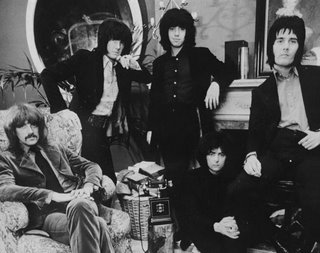

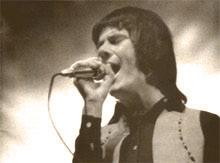

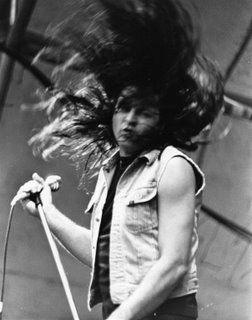

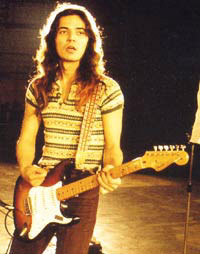



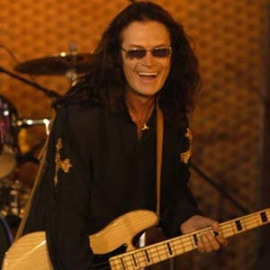

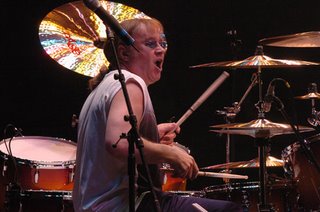
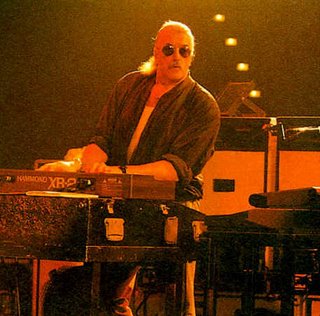



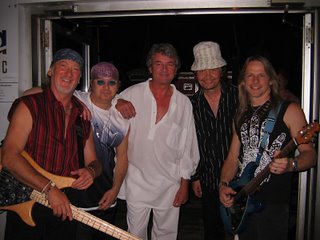
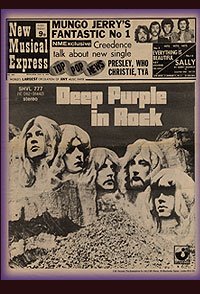
27 comments:
Too deep... hv a good weekend!
omg u learly kan wlite !
when u sing smoke on the highway star 4 us ah ?
witch cala ko v go wait 4 u ?
bila bon jovi mia turn??
Read until I blur liao. You must be one helluva big fan.
I think that's the only song I know from Deep Purple. :(
A lo. Everytime introduce some band I don't know one. Hehe.
Nevermind, I take it as a weekly reminder of...
WEEKEND IS HERE!!!
aiyak.. I dunno this band too..
How long u take to write this lengthy & informative post?
agree with king's wife, I read till I blur blur too :P
wish u a happy weekend too :)
i was at deep purple concert in 1991...they kick ass lar...that david c. guy was in whitesnake right? You heard the album that they did with steve vai on the axe..thats a very powerful album
[angel] deep meh? LOL... same to u, happy weekend!
[tonixe] i cant sing la, i play the guitar riff for u la.
[sengkor] not so soon la... let me finish all classic rock band 1st ok?
[king's wife] i think shud know other songs than this.
[nonnie] how come u dunno Deep Purple ah? Sighh... Happy weekend to u too.
[chen] u oso dunno? aiyoo... i really want to long piak now. u dunno who r them sure will blur la... nvm, enjoy the song n happy weekend :)
[fireburn] cool!!! u went to their concert b4... yes, david c with whitesnake, when steve vai was in the band really powerful!
Aww,.....this band brings back great memories...the 2 ians, blackmore etc.
i'm still listening to satriani's works these days. Simply awesome!
YEA!!! One of me Favourites Too!!
wah...now we know how old cocka is....:) muahaha......
so like attending history class....no wonder they are called ' DEEP purple'
i just heard live band on this song last nite... :)
[cocka] yah... really can recall alot memories... Joe Satriani rocks!
[ah pek] yeah.... !!!
[anonymous] hahaha... so u know how old is cocka now?
[ah nel] they play very well??
Deep purple for chics with deep deep hole ? LOL!
Anon....I'm same age as Jon Bon Jovi! Hehehehe!!! If he still rocks, so can I hor?
[lin peh] u FFK us for the meeting.. u r in deep deep shit... :P
[cocka] hehehe... u broke ur secret oledi... now we all know how old r u :P
tiu tiu....just drop by and say tiu tiu....
what DEEP PURPLE, i read until all blur blur !! ....
summore dun know what "Smoke on the water", but i oni know "no smoke without fire" .. kekekekke
my comment is lost:(
[lp] LOL... tiu q very much
[dreamie] haha... soli I realised this entry too long. "no smoke without a fire" is from Bad Company la... LOL
[winn] where lost?
yeah...its really well.. :)
Waaa, learn so many 'rock' songs from yr posts...
~ Sun ~
[ah nel] good la :)
wow i missed out this awesome post! deep purple is here deep purple is here! LOL!
hey wat is the diff between rock or classical rock or wat else?
agree with kw and chen, i read until i blur liao, so we just skip some of the info, hahaha...
[carcar] hahaha... after i posted only realised it's too long. ok... classic rock mean something is old, such as 60s, 70s and 80s rock, in other words they called it old school rock. rock is too general.
[sun]
sorry didnt see ur comment, something wrong with my blogger. Yeah... come learn more rocks here :)
[simple american]
I dun like MK VIII (2002 - present), Ian Gillian can't sing anymore but still want to sing. Ritchie Blackmore still my all time favorite guitarist for DP. Steve Morse is good too...
[simple american]
sure or not? can ask his autograph for me ah?
Post a Comment